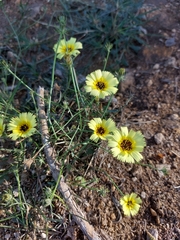Olive tree
Olea europaea
Olea europaea, commonly known as the olive tree, is an iconic plant species extensively cultivated in the Comunidad Valenciana. This evergreen tree is appreciated not only for its agricultural and economic importance but also for its cultural and historical significance in the Mediterranean region.
Characteristics:
- Leaves: The leaves are lanceolate, dark green on top, and silvery underneath, adapted to withstand dry conditions.
- Flowers: Olea europaea produces small, white to creamy flowers that are typically fragrant and appear in panicles.
- Fruit: The fruit is a drupe, commonly referred to as an olive. It varies in size and color upon ripening, ranging from green to a deep purplish-black.
Habitat:
The olive tree thrives in the warm, sunny climate of the Comunidad Valenciana. It is typically found in well-draining, rocky or sandy soils, which are prevalent in the hills and coastal areas of the region. Known locally as the algarrobo when referring to the larger, older specimens, the tree is well-adapted to withstand drought conditions and thrives in the Mediterranean climate.
Uses:
- Culinary: The fruit of Olea europaea, the olive, is processed into olive oil, which is a staple in Mediterranean cuisine. Both the oil and the olives themselves are highly valued for their nutritional benefits.
- Agricultural: As one of the primary crops in the region, olive cultivation is pivotal to the local economy, with numerous olive groves spread across the Comunidad Valenciana.
- Cultural: The olive tree is a symbol of peace and prosperity, deeply embedded in the history and traditions of the Mediterranean cultures, including those in the Comunidad Valenciana.
The Olea europaea is not only a vital element of the regional landscape but also a cherished part of the local heritage, representing the fusion of nature, history, and tradition in the Comunidad Valenciana.







